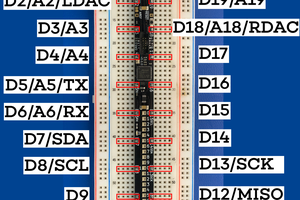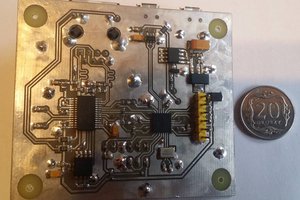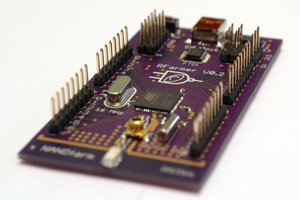Around the same time I started this project I also started to dive in to Kicad. This was a new pcb software for me. I have heard about it in passing but up to this point have not tried it. For this board I decided to change that and go ahead and design this usb serial uart board in Kicad. Install went without a hitch. Within seconds I was navigating the interface and doing my best to learn my new tool.
I must confess the learning curve while not bad at all; did pose a hiccup or two. I had to “Rethink” or should I say “Relearn” my approach to libraries. Kicad does this differently then I was use to. But documentation and help have been plentiful before long I was on my way creating my own libraries and modifying footprints to suit my needs. After a while I had my project complete and was ready to export the gerber files.
Once I had the gerber files ready I uploaded them to Oshpark. Shout out to OSHPark They make a excellent product with fast turn around. Perfect for the small batches of boards I tend to need..
Going over my order sheet. It looks like I had the boards in hand in under 2 weeks. Not bad at all!
The one thing to keep in mind with Oshpark orders is board clean up. You will have to snip off the extra “ears” around the board. Not a difficult task but one to note..
Next I needed to order the parts to assemble my new pcb boards. Back to the Microchip datasheet. Wait a moment. It looks like a newer chip just came out from them that was not available when I designed my board. I quickly downloaded the new data sheet. Nice! this new chip is a drop in replacement for the chip I designed for. The new chip I am going with and need to order is the Microchip MCP2221A ( originally designed for the mcp2221 ).. I also placed my order for the remaining parts with digikey.
Assembly went smooth without to much complaint. I do need to pickup a set of helping hands I think! Trying to hold the pcb parts and solder all at once takes a little skill.
If you head over to my Instagram page you will see my first test video. By connecting the rx and tx lines with a jumper I was able to echo back what I sent out to make sure the board functions as expected. Awesome!
My next test was more practical. I hooked it up to one of my Uno clones and proceeded to flash a new sketch onto the Uno. I do have to manually press the reset switch right before upload as the mcp2221A has no hand shaking line. But this was no real problem. Success! The new sketch loaded right away.
Conclusion? I will say this is a success. I will be moving forward with this chip for my future projects. For now if you would like to help support projects like this and more content in the future. Please feel free to head over to my Shop Page and pick one up for your self. You deserve it!
Thank you for reading, Files are available on my github at the link above. Want to make your own? I have shared the oshpark pcb link above as well. Just post back a photo! I love seeing when people make my designs.
 509Maker
509Maker
 Michael Rangen
Michael Rangen
 Marek Więcek
Marek Więcek
 Radu Constantin
Radu Constantin
 zacnotes
zacnotes